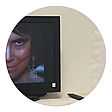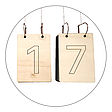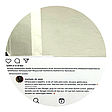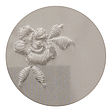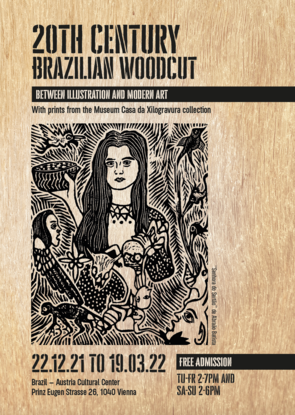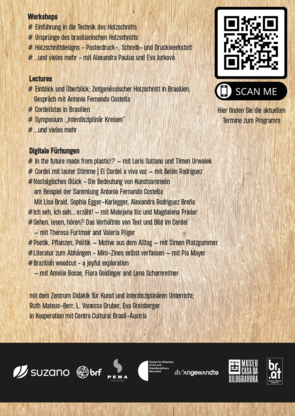Projekte
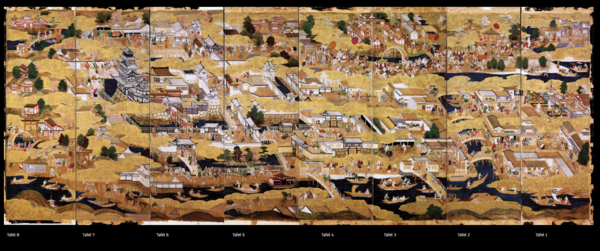
“皇帝、王、貴族、市民、農民、乞食” „Kaiser, König, Edelmann, Bürger, Bauer, Bettelmann“
World Expo 2025 Osaka: Artistic Contribution
From April 13 to October 13, 2025, the World EXPO will take place in Osaka, Japan representing the theme of “Designing Future Society for Our Lives”. The site is located on the man-made Yumeshima Island, 10 kilometers from Osaka city center.
About
The Osaka-zu Byobu (豊臣期大坂図屏風, “Osaka folding screen”), a folding screen painting from the mid-17th century depicting Osaka in the Toyotomi era, is a rare and extraordinary work of art that has traveled through time and across borders. Created in Japan, it is the only known example from this period to have found its way to Europe, where it is now on display at Eggenberg Palace in Austria.
After falling into oblivion, the screen was restored and rediscovered in Vienna between 2000 and 2004, sparking renewed interest in its role as a cultural artwork and its potential to reveal the complex history of exchange between East and West.
As part of an ongoing research project, artists from Tokyo University of the Arts (Japan) and the University of Applied Arts Vienna (Austria) are approaching Osaka-zu Byobu not as a relic to be restored, but as a springboard for creative and artistic explorations, merging past and present in dialog.
Details & Artists
A city is more than its buildings, streets, or waterways—it is a living tapestry of power, memory, and exchange, constantly reshaped by time. The 17th-century Osaka-zu Byōbu (豊臣期大坂図屏風, "Osaka Folding Screens") embodies this fluidity: once a shield against the wind (byō 屏 = protect, fū/bu 風 = wind), it now unfolds as a silent witness to authority, commerce, and the rhythms of everyday life, its layered panels preserving the echoes of a city in motion.
Sayoko Suwabe examines the fortifications of Osaka Castle, where stone fortifies, divides, and endures. Built and rebuilt across shifting regimes, its walls were more than mere defenses. They were symbols of dominance, carefully designed to impose authority. Through their structure and composition, she traces how political shifts were embedded within the city’s very foundations.
Diana Morzy traces the Yodogawa River as both a physical and spiritual force, shaping Osaka’s rhythms across time. Drawing inspiration from the Toyotomi family crest (豊臣紋) and the river’s braided course, she explores river’s role in the city’s rhythms and fortunes. Her work envisions the river not only as a trade artery but as a symbol of interconnectedness: binding nature, history, and the human spirit. Through a circular, intricately woven form, she reflects on the cyclical nature of existence, where past and present merge in a continuous flow of transformation.
Rintaro Kato fuses present-day photographs into a collaged panorama, revealing the interplay between ancient Osaka and the city’s modern reinventions.
Mizuki Jones is portraying a woman in kimono during a normal daily life in the modern age.
Shu Yan´s artistic research has centered on the issue of identity. Through his participation in this project, Shu Yan became particularly interested in the Osaka-zu byobu. This artwork depicts figures from various social strata and even presents the recurrence of certain roles across different points in time. However, in the final composition created by the artist, most of the faces appear uniform or are rendered in a simplified manner, making it difficult to distinguish figures of significant status through their faces. Therefore, Shu Yan aims to utilize the portraits depicted in the screen to construct a unique identification system and assign “identity documents” to selected individuals.
Makiko Kawakami brings the city of Ueno into focus, using an accordion-fold book (orihon, 折本) to create a dynamic interplay between isolated views and expansive urban landscapes. Her work encourages a fluid engagement, allowing for shifts in perspective, one can concentrate on minute details or unfold a broader narrative. The streets of Ueno are transferred to Osaka, creating a layered dialogue between two urban spaces.
Andrea Hu explores the visual language of mon (紋) and kirimon (切紋), traditional Japanese family crests, and their connection to hanko (判子) and inkan (印鑑), seals historically used as markers of identity, status, and authorship. These symbols, deeply embedded in cultural and artistic traditions, carry histories of power and personal inscription. Through printmaking techniques, Andrea examines how their forms and meanings can be reinterpreted and integrated into contemporary artistic practice.
Meanwhile, Nina Wandruszka examines the shifting wind of Osaka as both a literal force and a metaphor for change. Employing ChatGPT to speculate on how the wind might have differed in the 17th Century, she transforms the screen into a potential map, musical score, and intangible testimony to the city’s past air. Through sound, she reimagines the byobu’s visual language, inviting us to question how we interpret historical artifacts beyond what they depict.
After studying the significance of the Cha-do (“the way of the tea”) at the Osaka court, the corresponding Wabi-philosophy and lifestyle of simplicity, which was cognized by Zen no Rikyu, the personal tea and Zen master of Toyotomi Hideoshi, Galina Emelina decided to create a simple, yet contemplative kind of room lighting in the form of a shadow lantern.
Lena Fürjesi examines the interactions of shapes and colors in the digital art context and their influence on visual perception and the aesthetic experience of the viewer. The result is a transformed Osaka canvas that allows for different perspectives and interpretations. In summary, it can be said that this project not only opens up new aesthetic perspectives, but also contributes to digital art education.
Teresa Trimmel & Nick Gröller discovered the immediate vicinity of the “Ôsaka zu byobu” cabinet, a cabinet with countless porcelain objects. The production of porcelain was a well-kept secret for a long time, which made porcelain objects all the more desirable for the European ruling houses. The porcelain and the “Ôsaka zu byobu” not only tried to depict the foreign, but also to possess it. In our project, we deal with precisely these questions by projecting an image of supposed truth, but imposing a certain perspective on it. This creates a multi-perspective projection in which different images of perception overlap. This interplay of different views discusses the seemingly “most authentic” view in our porcelain light.
Sophie Koschitz’s starting point of her work are the trees on the Byôbu screen. This large-scale depiction of Ôsaka Castle mainly features deciduous trees and pines. Cherry trees are shown in full bloom, so light colors from white to pink are depicted. Ehmcke and Kaiser (2010) highlight the pines on the screen as a religious symbol (tree of the gods). In addition, this evergreen tree is a sign of generational longevity. Her area of research is the sociocultural significance of trees in meaningful places within communities. She is interested in the historical and cultural significance of trees in rituals, traditional narratives and stories. These trees are meeting places and places where people linger. What do these communal third places look like in the information age of the 21st century? Could the development of third spaces be a remedy for the epidemic of loneliness? My goal is to build on the significance of trees in the Byobu Paravant and, through an artistic research process, create a work of art and a space for exchange, reflection and simply being.
Presented via @Artitive, this exhibition is part of an ongoing research project with Tokyo Art University and the University of Applied Arts Vienna, running throughout Expo Osaka-Kansai 2025.
Contact/Projectlead:
Univ.-Prof. Michael Schneider (Tokyo University of the Arts)
Univ.-Prof. Dr. Ruth Mateus-Berr (University of applied Arts Vienna)
EXHIBITION O TRADUZIR
Cooperation between Centro Cultural Brazil Áustria and Center Didactics of Art and Interdisciplinary Education
Shows opening: 23.11.2022 - 28.02.2023
Opening Hours: Monday to Friday 12-5 pm
Adress: Centro Cultural Brazil Áustria
Prinz-Eugen-Straße 26, 1040 Vienna
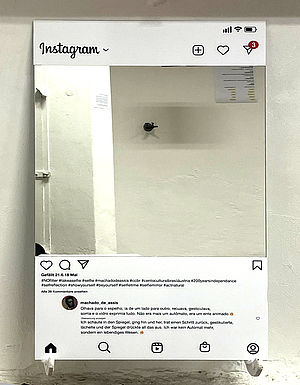
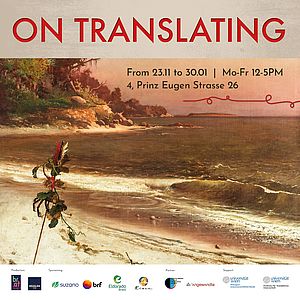
ON TRANSLATING
Anlässlich des zweihundertjährigen Jubiläums der Unabhängigkeit Brasiliens präsentiert das Centro Cultural Brasil-Austria mit der Ausstellung "ON TRANSLATING" die Edition "Contos do Brasil - 200 Jahre brasilianische Literatur", eine zweisprachige Publikation in Portugiesisch und Deutsch mit 81 Kurzgeschichten von 25 brasilianischen Autoren aus dem 19. bis 21. Jahrhundert.
Die im Rahmen der Kooperation zwischen dem Zentrum Didaktik für Kunst und interdisziplinären Unterricht der Universität für angewandte Kunst Wien und dem Centro Cultural Brazil Austria, im Sommersemester 2022 stattgefundene Lehrveranstaltung „Transmedialität im internationalen Ausstellungskontext" hat sich zum Ziel gesetzt, inter- und transkulturelle Lernräume zu ermöglichen und Übersetzungsprozesse entlang der Struktur eines transmedialen Kreislaufs zu eröffnen. Studierende des Zentrum Didaktik für Kunst und interdisziplinären Unterricht entwickelten über ein Semester hinweg künstlerische sowie didaktische Arbeiten, ausgehend von Impulstexten der letzten 200 Jahre brasilianischer Literatur (ausgewählt vom Institut Translationswissenschaft der Universität Wien). Dabei wurden Bezüge zu aktuellen kunstdidaktischen und gesellschafts-politischen Positionen auf wissenschaftlicher Ebene hergestellt und künstlerisch übersetzt. Das zyklische Moment dieser Übersetzungsprozesse zwischen analog und digital, alt und neu, zwischen Kulturen und (künstlerischen) Disziplinen wird dabei forschend begriffen, begleitet und vermittelt; Ergebnisse werden analog und digital zugänglich gemacht.
Die Ausstellung umfasst Genres wie Malerei, Musik, Oper, Telenovela, Animationsfilm und Installation, von klassischen brasilianischen Werken bis hin zu zeitgenössischen Interpretationen von Studierenden am Zentrum Didaktik für Kunst und interdisziplinären Unterricht unter der Leitung von Ruth Mateus-Berr, Eva Greisberger und L. Vanessa Gruber. Damit setzt "O Traduzir" die 2020 mit der Ausstellung "Der brasilianische Holzschnitt im 20. Jahrhundert: zwischen Illustration und moderner Kunst" begonnene Partnerschaft fort.
Beteiligte Studierende
lsabella Burtscher,
Julie Kohn,
Wolf Miksits,
Mattia Minelli
Lisa Waldner
In Unterstützung von
Botschaft von Brasilien Wien: Marcelo Gama und Tomás Seferin (Centro Cultural Brazil-Áustria)
Universität für angewandte Kunst: Ruth Mateus-Berr, Eva Greisberger und L. Vanessa Gruber (Zentrum Didaktik für Kunst und interdisziplinären Unterricht)
Universität Wien: Carolina Santana Borges (Zentrum für Translationswissenschaft)
Homepage Centro Cultural Brasil-Áustria
20th Century Brazilian Woodcut: Between Illustration and Modern Art
Videosammlung zu einigen Projekten.
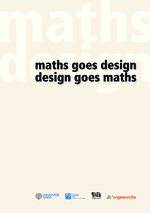
maths goes design
Interdisziplinäres Projekt: Universität Wien, Techn. Universität Wien, math.space und Universität für angewandte Kunst
Projekt 2007-2010
Ein Phänomen in der Lehramtsausbildung ist die Tatsache, dass man zwar in der Schule dazu angehalten ist, interdisziplinär zu unterrichten, jedoch vorab meist nie die Gelegenheit erhält, auf universitärer Ebene mit Studierenden anderer Disziplinen zusammenzuarbeiten. Idee dieses Projektes war es zu untersuchen, wie Design genutzt werden kann, um mathematische Inhalte begreifbar zu machen.
Zur Broschüre hier

TRES-CHIC-ESt
2021
TRES-CHIC-ESt 101022318 MSCA Standard European Individual Fellowship im Rahmen von Horizon 2020 Time-Resolved Electron Spectroscopy of a Challenging Highly Innovative Collective Excitation Study in Kooperation mit dem Photonik Institut der Technischen Universität Wien
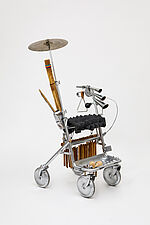
DEMEDARTS
Dementia.Empathy.Education.Arts.
2020
DEMEDARTS is an arts-based research project, located at the University of Applied Arts Vienna and funded by the Austrian Science Fund (FWF), within the PEEK-program (Programm zur Erweiterung und Erschließung der Künste): AR-609
www.fwf.ac.at/forschungsradar/10.55776/AR609
The project runs from: February 2020 – January 2024

Art 4 Science
2019
WKP 132 „Art 4 Science“, Projektleiterin: Eva Maria KÖNIG, St. Anna Kinderkrebsforschung
e.V. – Tumor-Immunoediting FWF: The Austrian Science Fund is Austria‘s central funding organization for basic research, PEEK: Programme for Arts-based research: https://www.fwf.ac.at/en/research-funding/fwf-programmes/peek/)

Coability/ Designcultures and Disability studies/
2018 & 2019/2020
Austria-Hungary Research & Education Foundation: Knowledge Sharing
Exchange Program on Coability/ Designcultures and Disability studies/Rosi Braidotty Posthuman. Critical Theory/ in cooperation with Laszlo Moholy Nagy University of Art and Design Budapest, HU.

INTEREG/EU
2018
INTEREG/EU: Design & Innovation (EU) University of Applied Arts Vienna (Angewandte),
MAK (Museum of Applied Arts Vienna), SCD (Slovakian Design Center, VŠVU (Academy of Fine. Arts and Design, Bratislava/ Institute for Design, Textil and visual Communication)

D.A.S. Dementia. Arts. Society
2015
Artistic Research on Patterns of Perception and Action in the Context of an Aging Society University of Applied Arts Vienna (FWF: The Austrian Science Fund is Austria‘s central funding organization for basic research, PEEK: Programme for Arts-based research: https://www.fwf.ac.at/en/research-funding/fwf-programmes/peek/). AR 366


Break the Walls
2014
Break the Walls PEEK (FWF) University of Applied Arts Vienna & University of TechnologyVienna & University of Music (Austrian Science Fonds, Programme for Arts-based Research: https://www.fwf.ac.at/en/research-funding/fwfprogrammes/peek/)

Sparkling Games Sparkling Science
2014
Sparkling Games Sparkling Science (bmwfw) University of Applied Arts Vienna & University of Technology Vienna (Research programme of the Federal Ministry of Science, Research and Economy (BMWFW) http://www.sparklingscience.at/en

ART LECTOR
2013
Art Lector is a transmedial technical solution for customized art and culture education for groups of students from schools, young and elderly visitors and people with special needs in museums & fluxguide (ZIT: Technology Agency of the City of Vienna: http://www.zit.co.at/en.html).

INTERACCT
INTegrating Entertainment and Reaction Assessment into Child Cancer
2012
INTERACCT: INTegrating Entertainment and Reaction Assessment into Child Cancer Therapy & University of Vienna, St. Anna Children Cancer Research Center Institute, T-Systems (FFG: The Austrian Research Promotion Agency: https://www.ffg.at/en)

Visuality & Mathematics
2012
Visuality & Mathematics: Experiential Education of Mathematics through Visual Arts, Sciencesand Playful Activities & Universities in Finnland, Hungary, Serbia and Belgium(EU-Tempus: http://eacea.ec.europa.eu/tempus/index_en.php)

Communication Lab & Science Center Netzwerk
2009
Communication Lab & Science Center Netzwerk (WWTF: The Vienna Science and Technology Fund WWTF. http://www.wwtf.at/)

Haptic and olfactory Design
2007
Haptic and olfactory Design for Viennas Creative Industries & University of Vienna, University of Natural Resources and Applied Life Sciences Vienna (WWTF: The Vienna Science and Technology Fund WWTF. http://www.wwtf.at/)
Joint efforts and cooperation, e.g., with industry, trade and business life
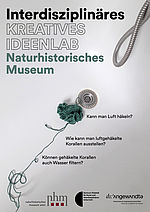
2020
Interdisciplinary cooperation with the Natural History Museum Vienna to design ideas for Deck 50

2020, 2021
Interdisciplinary Design Thinking lecture with Helga Kromp-Kolb, Herbert Formeyer,Thomas Schinko u.a.

2019
Contract with the Elisabethinen, the emerging biggest palliative center in Europe for art & design tasks. Developping ideas for the entrace in collaboration with Arch. Ding. Dieter Wall mann

2016—2019
Invitations at Janssen Stiftung. Pharmaceutical department of Johnson & Johnson, one of the biggest suplier of health products of the world, for supervising interdisciplinary collaboration. http://www.janssen.com/austria/

2016
Competition 40 years oft he company MAM: https://www.mambaby.com/shop/us_int/

2016
Collaboration with the Museum of Applied Arts Vienna: Design Education for and with refugees

2015
Invitation for an Applied Design Thinking LAB for NASA Space Apps Challenge

2015
Collaboration with the Vienna University of Economics and Business, Institute for for Entrepreneurship and Innovation, strategic management to collaborate within the seminar: Clean tech start ups/ smart energies. Conference a paper about the project, which combined Applied Design Thinking strategies with Lean start-up methods and developed the AD Canvas method in an interdisciplinary context, where design is implemented at the beginning of a business canvas.

2012—2016
The project INTERACCT (described above): INTegrating Entertainment and Reaction Assessment into Child Cancer Therapy & University of Vienna, St. Anna Children Cancer Research Center Institute, was realized in cooperation with the industry partner T-Systems. T-Systems is a German global IT services and consulting company headquartered in Frankfurt. Founded as a WASTE support, it is a subsidiary of Deutsche Telekom. They investigated 200.000€ into the project.

2014—2017
Cooperation with Academic Support Austria and Archdiocese Vienna as pastoral responsibility for artists since 2013 (Third party funding)

2015
Personal.curator: in cooperation with FLUXGUIDE

2013
Art Lector: in cooperation with FLUXGUIDE, young creative who managed to start their own business throughout the project.

2004
Cooperation with Volkshilfe: http://www.montagmoebel.com/

